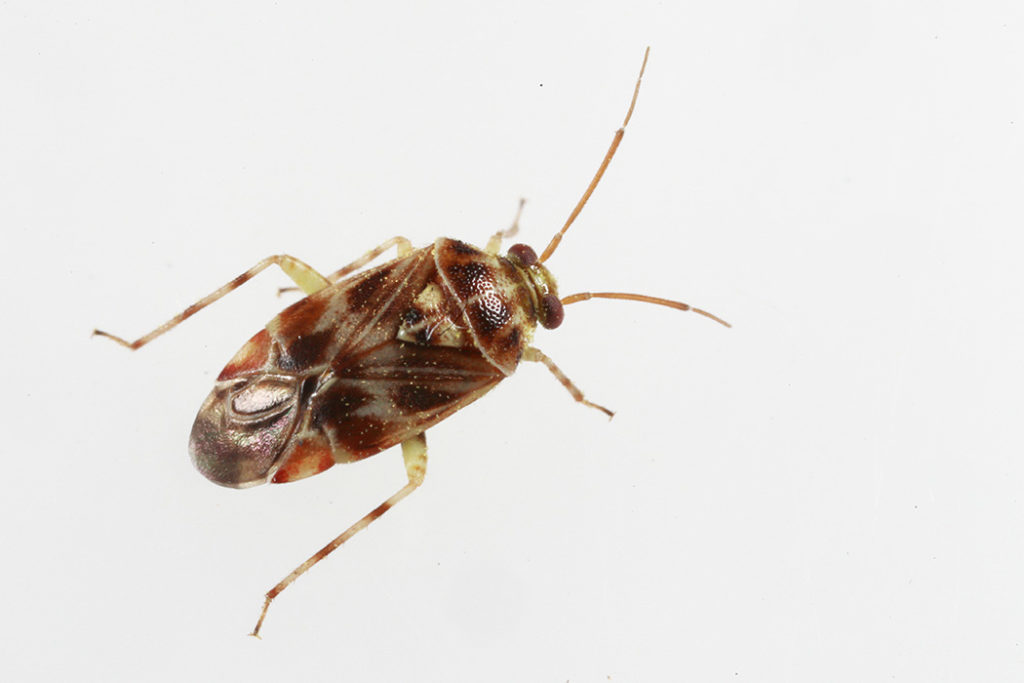
The oak catkin mirid, Tropidosteptes quercicola, is one of our seasonal bugs that can show up for a week or two then disappears back into nature. Photo by Mike Merchant.
Naturalists in Texas have no shortage of interesting insects to observe. If you were paying attention over the past couple of weeks, you may have noticed a small bug present in large numbers, especially around live oak trees.
I’ve received several samples, some of which were sent by curious homeowners and some by pest control professionals. In some cases, they were observed clustering around doorways, other submitters just remarked that they were “very common right now.”
Given the large number of small brown plant bugs on Bugguide, I initially gave up trying to identify this insect beyond its family (Miridae, plant bugs), but thanks to entomologist Mike Quinn, the mystery has been solved. The oak catkin myrid (MEER id), Tropidosteptes quercicola, is a tiny but attractive, mottled bug. At only 6 mm it is easily missed most years (I’ve never noticed it before), but occasionally can become very abundant (like this month).
Bugguide describes it as one of the most commonly collected mirids in oak-juniper woodlands of Central Texas. As its common name implies, it breeds on live oaks and is called a catkin mimic (blends in well with the male flower parts). It is very abundant on live oaks, especially.
Little seems to be known about whether this bug feeds on the oak plant itself, or perhaps on oak pollen; but if you see it around your home, don’t worry. This is one of many native insects that occasionally reproduces in large numbers, but rarely causes damage. If it makes you feel better, these insects are likely considered delicacies by the song birds in your neighborhood. And without bugs we wouldn’t have the birds, or lizards, or toads or lots of things that keep life interesting and fun.
